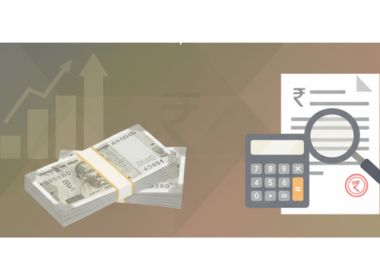Search Suggestions
- Gold Loan
- Money Transfer
- Mutual Funds

What is Home Loan LTV?
Few things give a greater sense of joy and accomplishment than stepping into your dream home. A home carries a different meaning to different people. For some, it is a symbol of love and security, comfort, and a status symbol for others. All in all, a home is a sanctuary in a chaotic world. And a home loan with inexpensive mortgage rates is one of the best ways to make that possible.
Buying a house is one of the most important decisions that a family takes in its lifetime-both emotionally and financially. With easy finance options, tax benefits, the opportunity to build another asset, improving creditworthiness, and year-on-year appreciation- buying a house is a great investment. Property ownership is also a great post-retirement avenue. After retirement, you avoid landlords and ever-increasing rent hassles if you live in your own house. Alternatively, you could rent out the property and live comfortably off the rent. So, the question is not WHY to buy a house but WHEN?
What is a Home Loan?
A home loan is a secured loan that is obtained to purchase a property by offering it as collateral. Home loans offer high-value funding at economical interest rates and for long tenures. They are repaid through EMIs. After repayment, the property's title is transferred back to the borrower.
Difference between Home Loan and Mortgage Loan
Mortgage loans and home loans are often used interchangeably. However, there’s a marked difference.
- Mortgage Loan: It is the umbrella term used for availing a loan against property (residential or commercial) as collateral that the borrower already owns.
- Home Loan: It is a loan availed for buying, expanding, renovating, or constructing a house.
Home Loan
Mortgage Loan
End Purpose
Can only be used to finance the acquisition or construction of a home
No restriction on the end use. Can be used both for personal and business purposes
LTV(Loan to Value)
RBI has capped the LTV up to 90% of the property’s market value
Typically 60- 70% of the property value
Interest Rate
Lower than mortgage loans
Mortgage rates of interest are 1-3% higher than home loans
Tenure
Up to 30 years
Up to 15 years
Different Types of Home Loans
A home loan commonly refers to a loan availed to buy a new house. However, there are other types of home loans as well.
- Home Construction Loan: If you own a plot of land, you can apply for financing for the construction of a house.
- Land Purchase Loan: Loan to purchase a plot of land.
- Home Improvement Loan: Loan to carry out repairs, renovations, and improvements in your existing house.
- Home Extension Loan: Loan to increase the built-up area of your existing house. Example- Adding a new room or a floor.
- Composite Home Loan: It is a combination of a Home Construction Loan and a Land Purchase loan. Here, you apply for financing to buy land and construct a house on it, all on a single loan.
- Home Loan Balance Transfer: If you are not satisfied with your current Home Loan rate, you could transfer the home loan’s outstanding balance to a different lender who offers a lower interest rate.
- Home Loan Top-up: It is an additional loan provided by a housing finance company on an existing home loan, with minimal new documentation.
Suggested Read: How Does One Get A Home Loan Without A Guarantor?
What is Home LTV- Loan to Value ratio?
A loan-to-value (LTV) ratio in a home loan refers to the percentage of the property value that the lender provides financing for. The remaining value has to be contributed by the borrower. LTV is one of the factors considered by lenders while approving a home loan.
For lenders, the LTV ratio ensures that it doesn’t finance more than the property value. The higher the LTV, the higher is the risk for lenders. For borrowers, a high LTV means higher borrowing costs including higher interest rates on home loans and other mortgage loans. Thus, a lower LTV means lower borrower credit risks for the lender and that could mean better terms, including interest rates, for the borrower.
How is Home Loan LTV Calculated?
The loan-to-value ratio is simply the ratio of the loan amount to the value of that asset. It is expressed as a percentage.
The formula for Home LTV Ratio is
LTV Ratio (%) = (Amount Borrowed/Property Value) x 100
As a general rule, an LTV of 80% or less is considered a good LTV.
LTV Guidelines in India
The LTV ratio depends on the loan amount you are applying for from a bank or Housing Finance Company. The RBI has issued the following guidelines for the same.
Home Loan Amount
LTV Ratio
Up to Rs. 30 Lacs
90% of the property value
Rs. 30 Lacs - Rs. 75 Lacs
80% of the property value
Above 75 lacs
75% of the property value
How Does LTV affect Home Loan Eligibility?
The LTV ratio is an important determinant in home loans and mortgage loans, among other factors. So, how to maximize your Home Loan Eligibility through LTV calculation?
- Make a Down Payment: Making 20% of the appraised value of the property to be bought or mortgaged, can help bring the LTV down to 80% or less, which is considered a good LTV. This means a higher chance of getting your home or mortgage loan approved.
- Lower Your LTV: A lower LTV means a lesser risk for the lender and borrowers can leverage this by negotiating for better mortgage rates, longer repayment tenure, etc. You can get to an ideal LTV level by increasing the down payment, selecting an asset that costs less, or getting your home revalued to get the benefit of appreciation and thus a better property value.
While applying for a home loan or a mortgage loan, most borrowers fail to look beyond the usual mortgage rates of interest, tenure, and EMIs Just a little research about what more goes into calculating the home loan eligibility can get you a far better and economical deal.
CATEGORIES
OUR SERVICES
-

Credit Score
-

Gold Loan
-

Personal Loan
-

Cibil Score
-

Vehicle Loan
-

Small Business Loan
-

Money Transfer
-

Insurance
-

Mutual Funds
-

SME Loan
-

Corporate Loan
-

NCD
-

PAN Card
-

NPS
-

Custom Offers
-

Digital & Cashless
-

Milligram Rewards
-

Bank Mapping
-

Housing Finance
-

#Big Business Loan
-

#Gold Loan Mela
-

#Kholiye Khushiyon Ki Tijori
-

#Gold Loan At Home
-

#Sunherisoch
RECENT POSTS

Ways to Improve Your Personal Loan Eligibility
Know More
What is Short-Term Capital Gains (STCG) Tax in India?
Know More
What is Professional Tax? Meaning & Importance
Know More
Financial Leverage Explained: Types, Formulas & Examples
Know More
What is Cash Management? Meaning, Objectives & Key Components
Know More
Tax on Gold in India: Everything Buyers Must Know
Know More
What is Equity Capital and Why is it Important for Business Growth
Know More
How to Get a Pre-Approved Personal Loan? Step-by-Step Guide
Know More
Why Are Gold Loans the Best Option When Banks Reject Your Personal Loan?
Know More
Struggling with low CIBIL? Here’s How a Gold Loan Can Still Get You Funded
Know MoreFIN SHORTS

The Best 7 SIF Funds of 2026: A Better Way to Invest
Know More
Gold Price Hits ₹1,40,000: How It Impacts Gold Loan Amounts
Know More
How to Check Loan Number: Step-by-Step Process
Know More
How to Open an SIP Account: Online and Offline Process
Know More
How Do I Apply for MSME Certification Online in India?
Know More
7 Important Reasons to Choose Hallmark Gold When Buying Jewellery
Know More
What Are Co-Pay and Deductibles in Insurance Policies?
Know More
Should You Take a Loan Against Your Mutual Fund or SIP?
Know More
Top 5 Best Mid-Cap Mutual Funds to Watch in 2026
Know More
Are Personal Loans Right for Retirees? Key Points to Consider
Know More
What Happens to a Personal Loan After the Borrower Dies?
Know More
Best Loan Choices for Credit Scores of 580 and Below
Know More- South +91 99469 01212
- North 1800 313 1212





